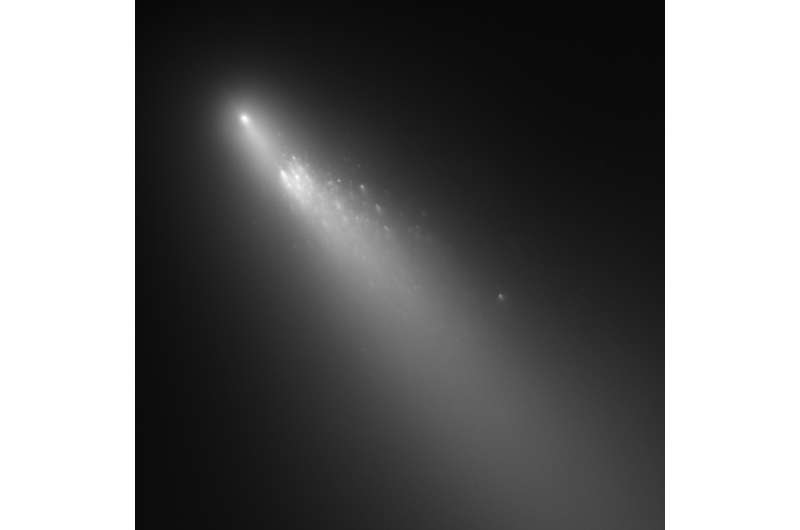New study reveals relationships between chemicals found on comets

A new study has revealed similarities and relationships between certain types of chemicals found on 30 different comets, which vary widely in their overall composition compared to one another. The research is part of ongoing investigations into these primordial bodies, which contain material largely unchanged from the birth of the solar system some 4.6 billion years ago.
By studying the composition of hazy comas and tails of these comets, researchers found that certain chemical ices on the comets would regularly appear in concert with other chemicals in a correlated way, while certain other chemicals appeared or were absent independently from others. "This relates to how the chemicals are stored together or sequestered in the nucleus, or body of the comet," said the paper's lead author, Neil Dello Russo, a space scientist at the Johns Hopkins University Applied Physics Laboratory in Laurel, Maryland.
The amounts and relationships of the chemicals observed in comets can help researchers understand more about the formation of our solar system. "We want to study the abundances of these chemicals because comets are a window into the distant past, and they can tell us what the chemical characteristics and conditions were like in the early Solar System," said Dello Russo. The team studied various types of simple but abundant chemicals, including volatiles such as water, methane, carbon monoxide and ammonia. Observations from Earth cannot directly detect these chemicals on the nucleus of comets, but gases, ices and grains released from the comet leave a chemical trail that can be observed in the hazy comas and tails of comets.
Researchers studied data gathered from 1997 to 2013, and included both short-period comets (those that are stored around the Kuiper Belt beyond the gas giant planets) and long-period comets (which formed among the gas giants before they were ejected to the far more distant Oort cloud). The study compared the chemical makeup of the comets measured after they were released from these reservoirs and found that while each comet has a unique chemical signature, short-period comets are on average more depleted in certain chemicals than long-period comets from the Oort cloud.
The findings were published in the November issue of Icarus.
The study utilized Earth-based high-resolution infrared spectrometers, which can observe minute differences in color that reveal diagnostic fingerprints of the chemicals present in comet tails. Data from the Near-Infrared Spectrometer (NIRSPEC) at the Keck 2 Telescope of the W. M. Keck Observatory on Mauna Kea, Hawaii; the Cryogenic Echelle Spectrometer (CSHELL) at the NASA Infrared Telescope Facility on Mauna Kea; the Infrared Camera and Spectrograph at the Subaru telescope, also on Mauna Kea; and the CRyogenic high-resolution InfraRed Echelle Spectrograph (CRIRES) spectrometer at the VLT Telescope at Cerro Paranal, Chile, were used. Dello Russo explained that this research was only made possible due to recent breakthroughs in infrared spectrometers: "In the past 20 years, technological advances have really made it possible to accurately detect volatile chemicals in comets, and to do so for comets that are fainter and farther away than previously possible. That allowed us to study a large enough group of comets to note and examine significant trends."
Dello Russo said that studies such as these are needed to expand what scientists know about the nature and history of comets, how cometary ices are related, and how they are stored in and released from the nucleus. "Comets are very diverse," he said. "When NASA or ESA sends a mission to a comet, we can learn a tremendous amount of detail on that specific comet. What our research does is put those findings into the larger chemical context of the overall comet population. We can help answer where an individual comet fits into the population of comets."
More information: Neil Dello Russo et al. Emerging trends and a comet taxonomy based on the volatile chemistry measured in thirty comets with high-resolution infrared spectroscopy between 1997 and 2013, Icarus (2016). DOI: 10.1016/j.icarus.2016.05.039
Journal information: Icarus
Provided by Johns Hopkins University


















